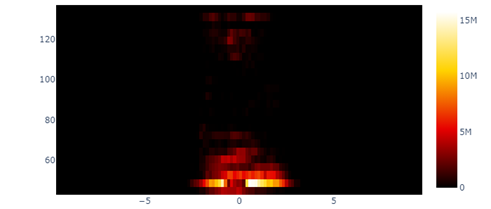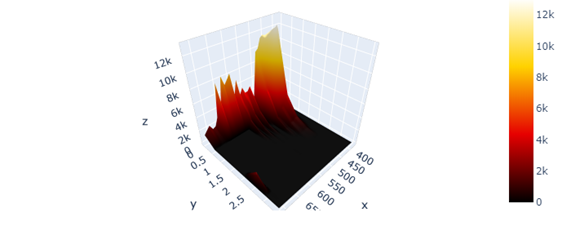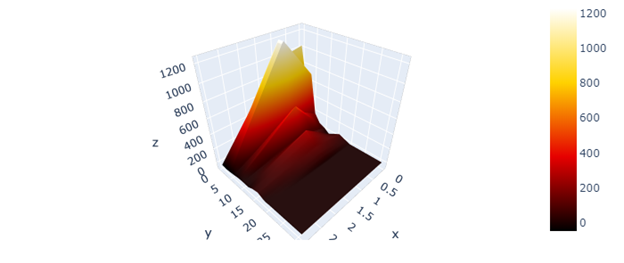Rapid-E unique features

Example of scattering raw data represented as image
X-axis shows time in microseconds, Y-axis shows different scattering angles with respect to the scattering laser axis. Final image is 120 acquisitions x 24 scattering angles.
Light scattering detection
Each particle crossing the laser diffuses laser light according to the Mie theory, and the pixels record the light's intensity. The resulting information is represented in the raw data file.

Example of fluorescence raw data represented as waterfall plot
X-axis shows wavelengths in nanometers, Y-axis shows time (8 consecutive acquisitions). Final image is 8 acquisitions x 32 wavelength ranges.
Fluorescence measurements
The measurement of fluorescence signal is done by a proprietary optical arrangement resulting in 32 fluorescence bands been detected simultaneously for each individual particle. The acquisition of spectrum is done 8 times to ensure that all optical signal has been captured.

Example of lifetime raw data represented as waterfall plot
X-axis shows lifetime channels, Y-axis shows time in ns. Final image is 32 acquisitions x 4 lifetime channels.
Fluorescence lifetime measurements
The measurement of fluorescence lifetime signal is done by a proprietary optical arrangement resulting in 4 fluorescence bands been detected simultaneously for each individual particle. The acquisition is done with 1 ns second resolution over all 4 channels.
